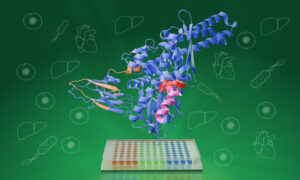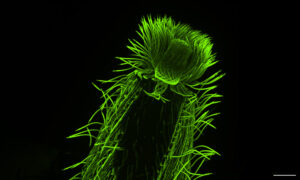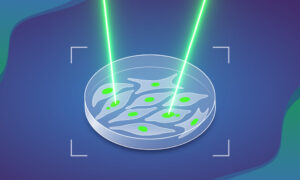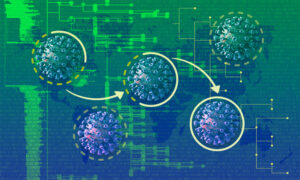
Welcome: Marco Marcia
The Marcia group will be studying long non-coding RNAs – large RNA molecules that control when and where genes are turned on – aiming to understand how they are organised and how they interact with other cellular machinery. The lab’s main approach will be X-ray crystallography, which they will complement with techniques such as electron microscopy and small-angle X-ray scattering as needed.
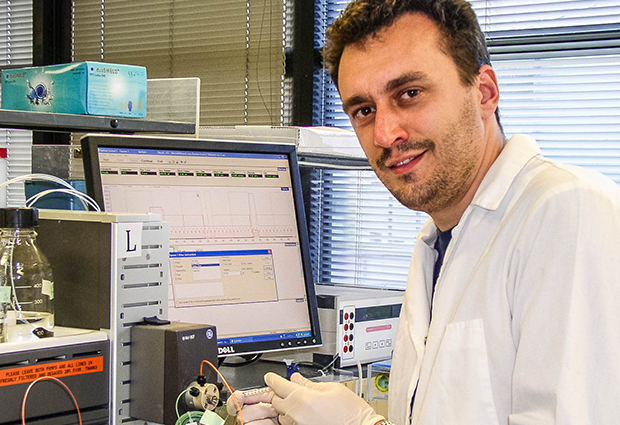
How would you explain your work to non-scientists?
The way I explain it to non-scientist friends is that, when I arrive in a city I like to have a map to orient myself. And that’s pretty much what we do in X-ray crystallography: we’re building maps of our target molecules, and then we know where the active site of the enzyme is, what that residue is doing… we know where each of those elements is located in a three-dimensional space. So it’s like going to a city and knowing where’s the post office, the chemist, and so on.
When I arrive in a city I like to have a map to orient myself. And that’s pretty much what we do in X-ray crystallography.
Name one tool you can’t do without
It’s not really a tool, but I’d say my left hand, because it’s the one I use for freezing and harvesting crystals – I’m not actually left-handed, but that’s the hand I use for that very important part of my job. Apart from that, my pot of Chinese green tea that I like to drink when I’m doing computer work.
Whose work at EMBL intrigues you? Do you already have potential collaborators in mind?
I already have contacts with some specific groups, like Christoph Müller’s lab in Heidelberg, because we share complementary interests. So I could be looking at the RNA side of projects that he’s carrying out from a protein-protein or protein-DNA perspective. The other important collaborator that I’m really counting on is Anton Enright at EMBL-EBI, because to understand these long non-coding RNA sequences we need sophisticated bioinformatics tools, and potentially even to create some novel tools. And that’s where Anton is an expert, so I’m really happy to have the possibility of collaborating with him.
This is for the moment, but long non-coding RNAs are involved a broad range of fundamental processes, so I expect that many groups will be able to share interests with us and help us to understand the function of our targets from a cellular biology point of view, from a genomics point of view, a developmental biology point of view, and even potentially for doing some work in model organisms, like mice, together with colleagues in Monterotondo. So I expect that in the future my network of collaborations within EMBL will grow.
What is your philosophy for running your lab?
In addition to mentorship on their research projects per se, I think that mentorship on how to present research, how to organise it clearly and explain it clearly is important. It has certainly been important for me in the past, both to understand my results better and to secure positions throughout my career. This can come from the classical group seminars, but also from individual discussions, working together on presentations and research proposals, and eventually paper manuscripts.
In my students’ office there’s already a small corner where I want to collate brochures and information about fellowships, grants, availability of positions in other labs to help build their careers.
Mentorship on how to present research, how to organise it clearly and explain it clearly is important.
What will you be looking for as you build your group?
First of all, I want to have an international group. I’m looking for people who are independent and like to have freedom in the research that they’re doing – but, of course, without loosing their track. People who are good at communicating and discussing science and converging on common decisions for projects to develop. I have a broad spectrum of interests, and I’d like my students to have broad horizons, too.
If there was a motto hanging at your lab’s door, what would it be?
“Yes, we will solve it!” (Because we talk about solving crystal structures…)
Where do you come from? What are the best things about life science in your country?
I am Italian, and I think Italy has an amazing potential in science, contrary to many stereotypical beliefs. Primarily based on my personal experience, what Italy offers that’s really outstanding is the formation of students. The country offers an excellent school and university curriculum that gives you a really solid basis for pursuing a career in research.
What’s the best advice you’ve received (or wished you had received) in your career?
For me, that was probably a piece of personal career advice. During my undergrad, Professor Capranico, one of my mentors at Bologna University, understood from the discussions we had that my interests in science were in structural biology, which was new to me as a phrase and as a research field. So the fact that he matched my interest in molecular mechanisms and molecular architectures, and drug-target interactions, to the words “structural biology”, and advised me to take a career path in structural biology and X-ray crystallography – that was the best advice. He pointed me to the right field to do the things that I really enjoy!
